Equipment
Why isn’t my child getting any better at golf?
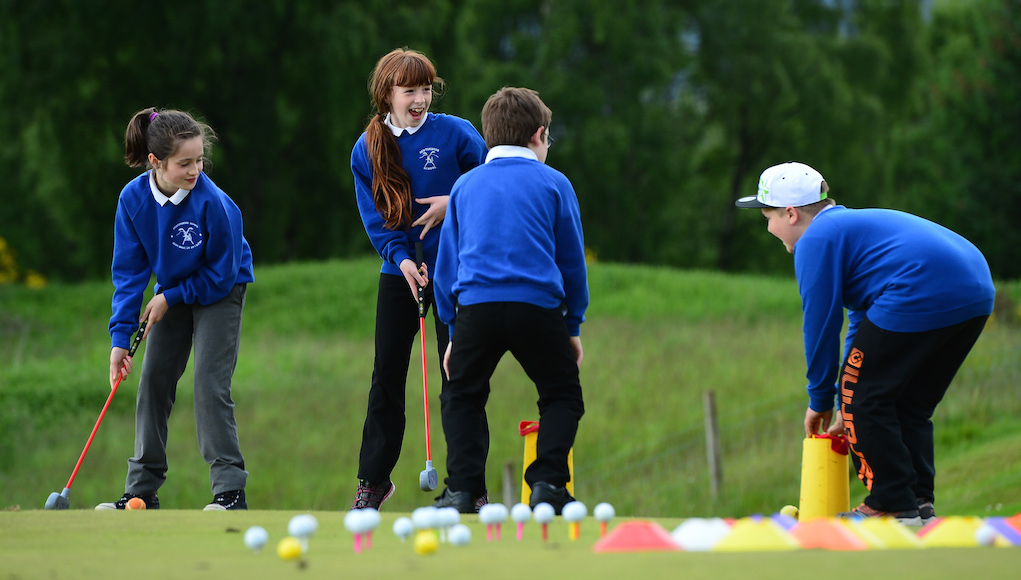
As a junior golf coach, I am regularly approached by parents who would like to discuss their child’s performance. They want to know why isn’t their child doing as well as they were in previous weeks or months, or why they haven’t advanced to the higher-skill group.
I always welcome these questions, because they give me an extra chance to educate parents on the goals of our junior golf development program. But unfortunately, some parents are not as understanding as they should be, or don’t have access to the right information. For that reason, unreasonable expectations are a big problem in junior golf.
I get it. As a parent, you want to see your child do as well and hit as many good shots as possible. It makes you proud, and that’s not a bad thing. It’s human nature that you want to see your child succeed. I wrote this article to help explain why your child can often struggle, and why long-term development supersedes instant success in junior golf.
Success does not follow a straight-line pattern
If you speak to any successful athlete, you will find that they likely experienced just as many lows in their career as highs. The important thing about their development, however, was that there was a general trend upward, despite the lows.
when I hear, “come on Johnny, you were doing better last week,” I cringe. if you want your child to drop out of golf, then carry on.
For both parents and children, it’s easy to become obsessed with instant success, instead of thinking about long-term development. I guarantee that every child will at some stage go through a period of difficulty with their golf, as the top pros do. To aid long-term development, do not demotivate your child by highlighting their struggles. Instead encourage the child to be resilient and problem solve through this period. These are traits that top athletes have, and encouraging these traits in young children will not only help their golf, but also their development as people.
Growth spurts
Growth spurts are unavoidable. All children go through them, and these changes in body proportions drastically affect the coordination abilities of a child.
- At age 2, a child’s legs make up 2/5 of their body. By age 7, their legs are now 1/2 of their body.
- At age 7, a child’s arms are 2.75/6 of their body, but by age 14 their arms are 3/7 of their body.
Imagine if I added 3 inches to your arms and asked you to swing a golf club. Your swing would be all over the place. Of course, a child’s arms do not lengthen 3 inches overnight, but the growth process affects coordination and movement skills. Furthermore, when bones grow quicker than muscles, subsequently stretching and stressing the tissue, a child’s abilities can also be affected.
Don’t make growth spurts harder on children than they already are by expecting them to maintain the same level of performance they had before their growth spurt. It won’t be long before your child is feeling confident in his or her body again.
Performance Plateaus
With anything in life, there becomes a time when performance plateaus and the journey to the next level may not be as quick as the previous journey. For example, reducing your handicap from 28 to 20 may have been reasonably easy, but the lower your handicap got the harder it was to reduce it, right? For a child, a common plateau occurs when they cannot hit the ball any farther. And in most cases, we need to wait for a child to get stronger before worrying about more distance.
Like periods of growth spurts, there will also be long periods of no growth, where a child’s strength may not increase for a period of months. So, if your child is struggling with gaining distance, do not get over concerned and let their bodies grow. To me, this is another great example of times when development supersedes instant success. While there may be no instant successes of hitting the ball farther, other valuable sport and life skills can be developed during this time, such as work ethic, team work, goal setting and important social skills, to name a few.
In our FUEL Junior Golf Programme, we are passionate about creating well rounded individuals who are physically active and love the game of golf, hence our motto #personathletegolfer.
Relative age affect
In short, relative age effect discusses the chronological age (how many years old the child is) and the biological age (actually how old/developed their body is).
Let’s say an 8-year-old named Billy and an 8-year-old named Johnny play against each other. Johnny might hit it 30 yards past Billy off the tee, but Billy’s relative age is only 6. Chances are, Billy won’t be 30 yards behind Johnny for long.
Cognitive development versus motor development
In layman’s terms, research has shown that a child’s movement skills are heavily related to their ability to process information. For that reason, it’s common that young children can sometimes not grasp new movements, despite all our efforts to help.
In this case, we have to allow time for a child’s mental abilities to improve before expecting any changes in movement. Moreover, a young child is often more interested in looking at the clouds than listening to your swing tips. So quit the advice and let them play, fail and learn.
When was the last time a top athlete thanked their parents for their coaching? That rarely happens, but they almost always thank their parents for their support.
Summary
As parents and coaches, we must understand that the development of a child is a highly diverse process and crucially, it is not always about golf. Sport is a great tool to help children develop in a variety of ways, and it is important not to judge them on only their sporting skill. So the next time you’re frustrated with the development of your junior golfer, remember all the reasons they could be struggling.
- Success does not follow a straight-line pattern.
- A child has no control over growth spurts, which can dramatically hinder their performance.
- Performance plateaus again cannot be avoided in some areas of the game. Remember, there’s isn’t one world-class athlete who hasn’t hit a performance plateau. What’s the worry?
- A 6-year-old can hardly add 12 and 15 together, so it makes sense that they won’t always understand the leg, knee and arm positions of the golf swing.
- Developing your child into a well-rounded, respectful and mannered individual is most important.
- Remember that as parents, you are there to support… not coach.
On a final note, if you want your child to become the best golfer in the world (and they better share that goal), understand that you have 20+ years to achieve it. Believe me, there is little value in being the best 10-year-old golfer in the world.
- LIKE275
- LEGIT16
- WOW13
- LOL4
- IDHT4
- FLOP1
- OB2
- SHANK17
Equipment
Putter Roundup: 2024 Zurich Classic of New Orleans
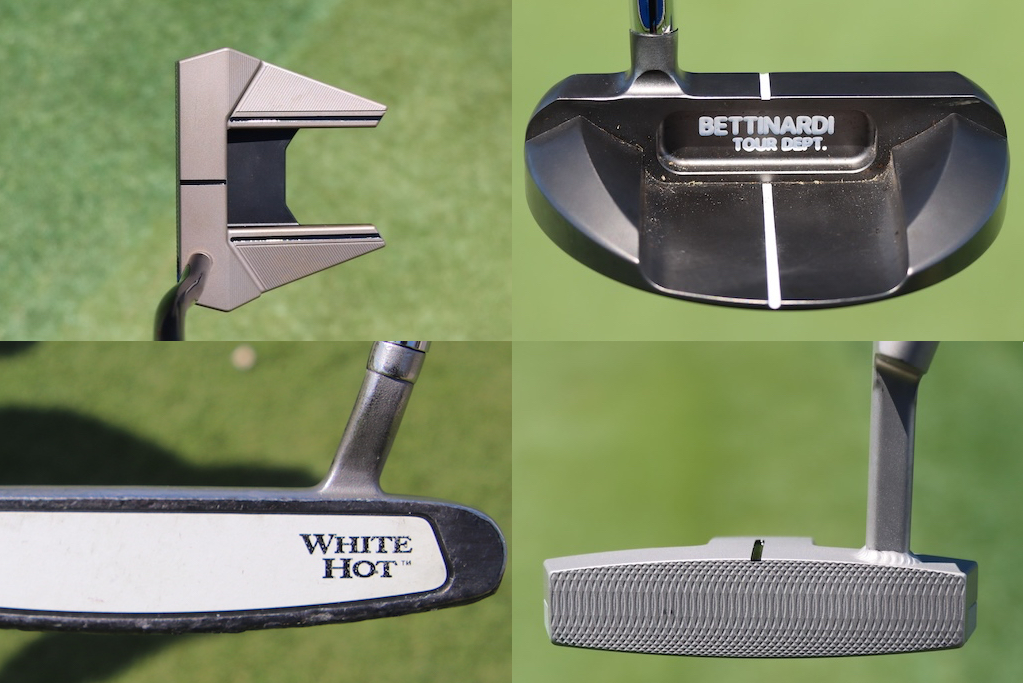
We always get some great photos of some phenomenal putters at tour events and love to share them. Here are a few from the 2024 Zurich Classic that caught our eye and seemed interesting. (And as a reminder, you can check out all our photos from New Orleans here)
MJ Daffue’s Scotty Cameron T-11 Prototype
MJ is going with the new Scotty Cameron T-11 Prototype this week. The putter is a multi-piece mallet that puts an emphasis on stability with the wings on the back. Daffue’s putter does have a design that differs from retail with a monotone finish, which eliminates the black paint on the aluminum parts that we see at retail. He also has a half siteline milled into the top and an L-neck welded on for some additional toe hang. The face features a deeper milling that should offer a softer feel and slightly quieter sound.
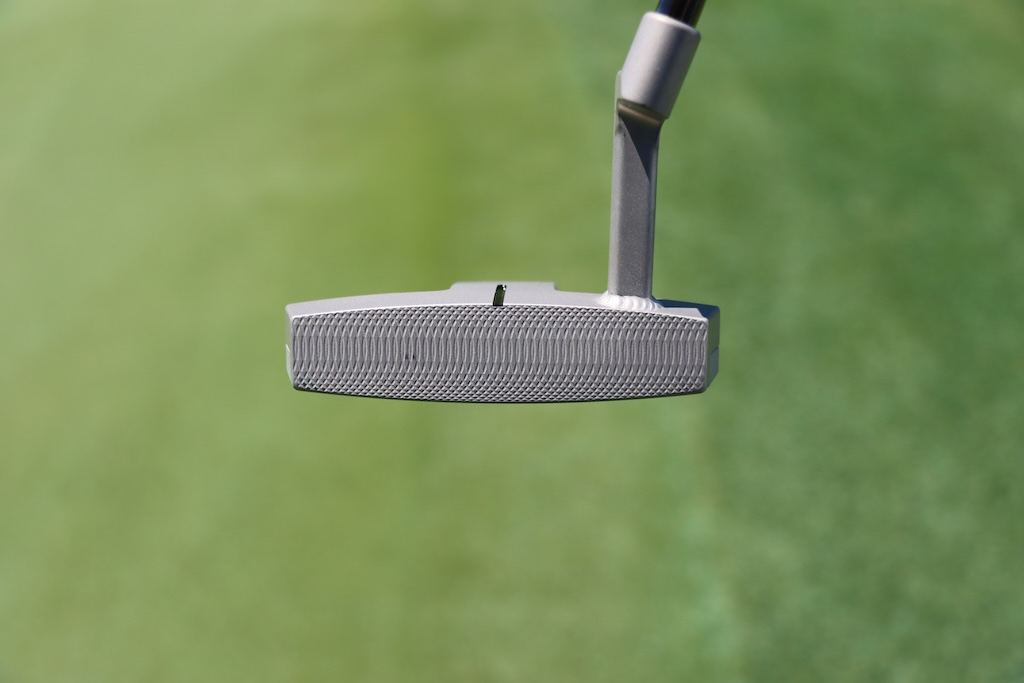
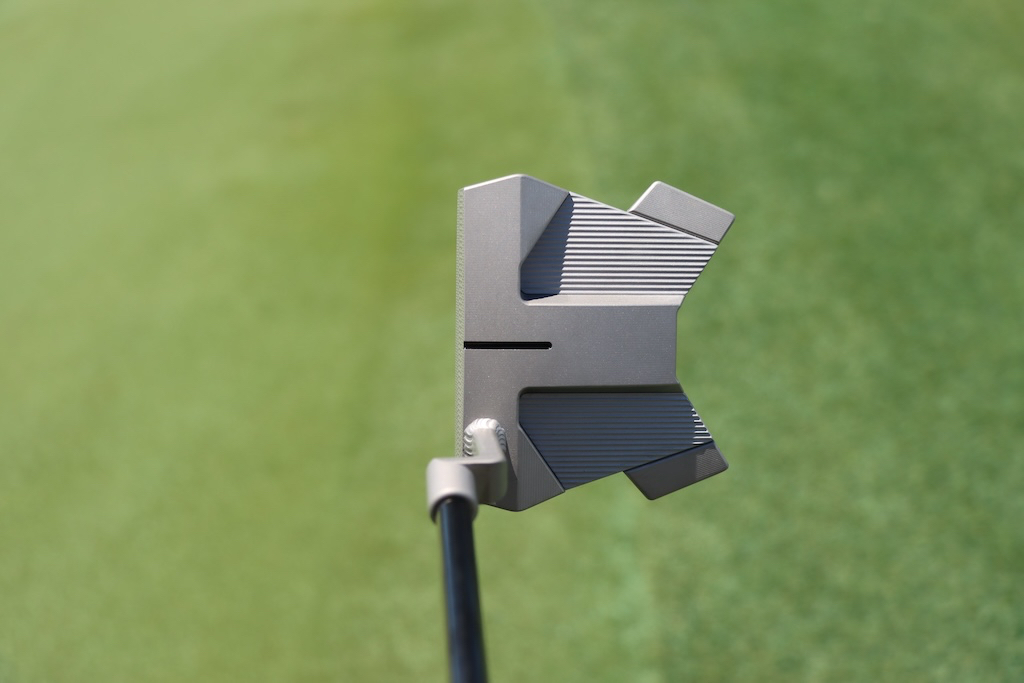
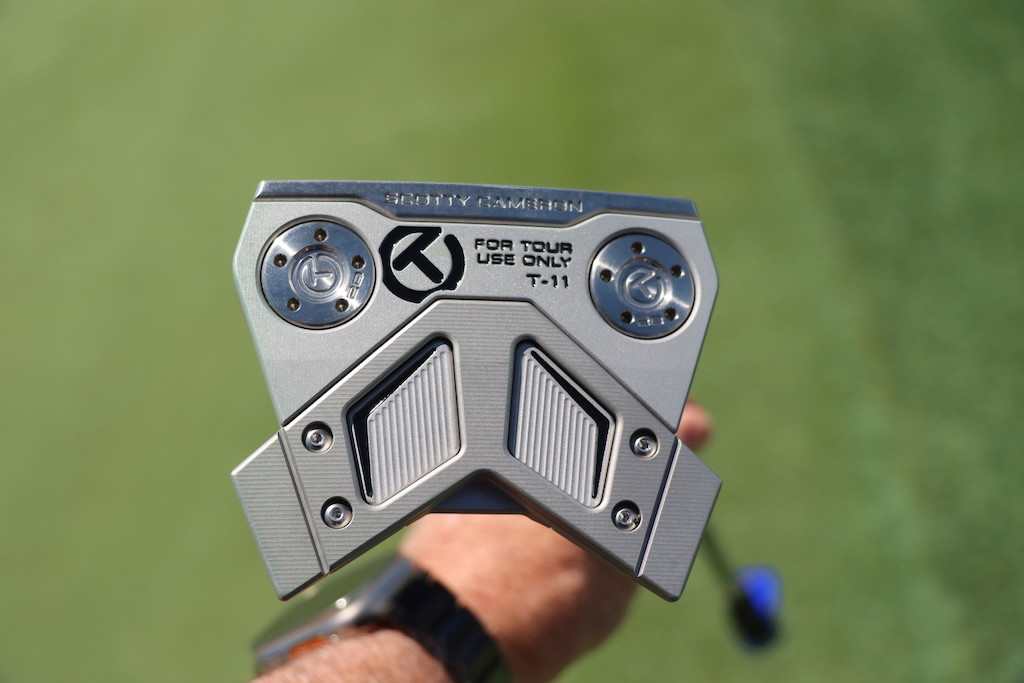
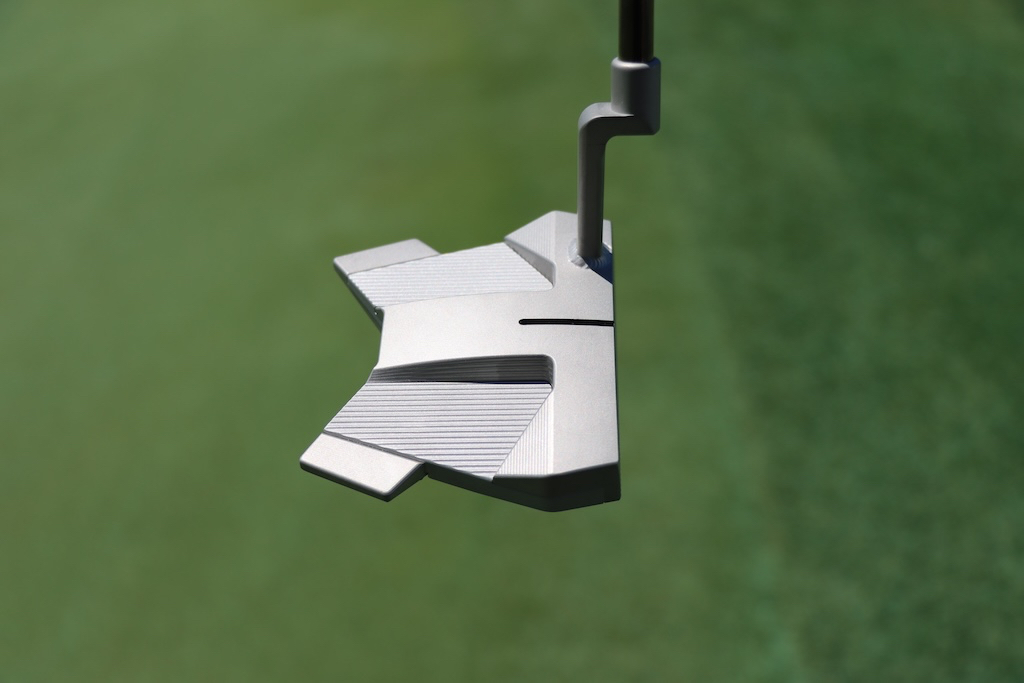
Scotty Cameron T-7.5 Prototype
We spotted a few different Scotty Cameron Phantom models with modified rear flanges. It looks like the straight black flange was cut into a half circle for a little softer look at address. On this T-7.5, you can still see the raw aluminum from the back view, so this might have been a last-minute job to get them out on tour. The semi-circle also has a white line on it, maybe to frame the ball differently.
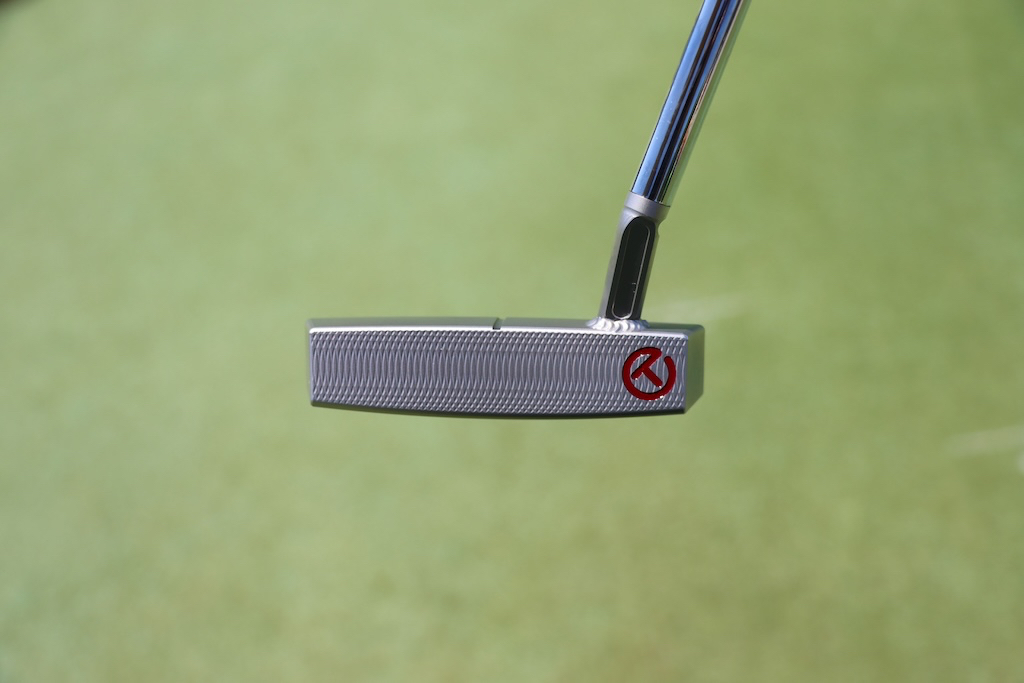
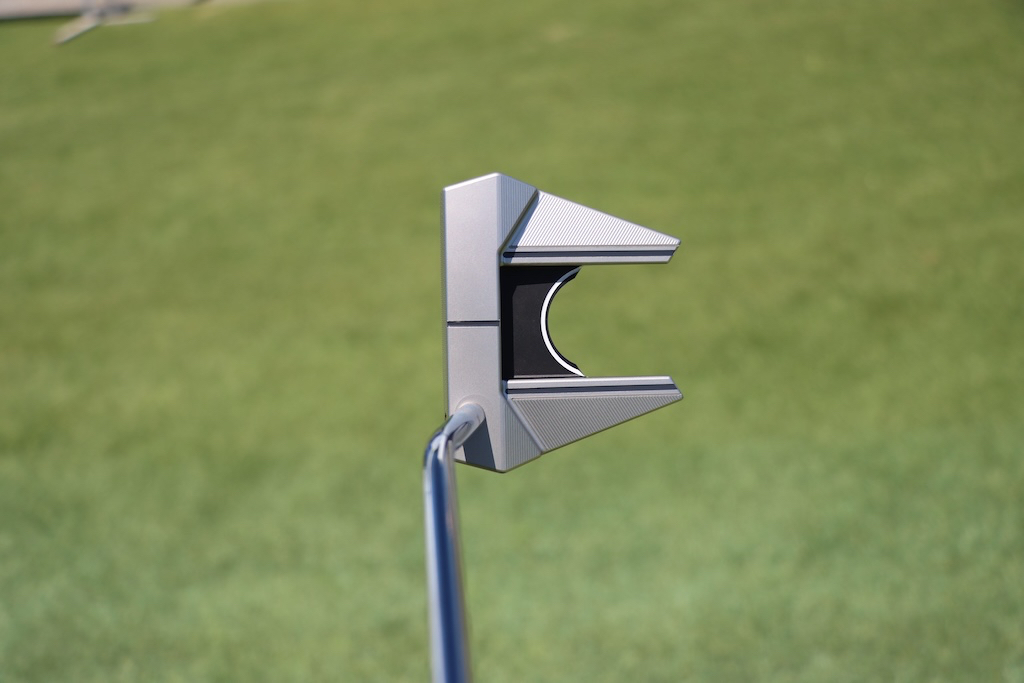
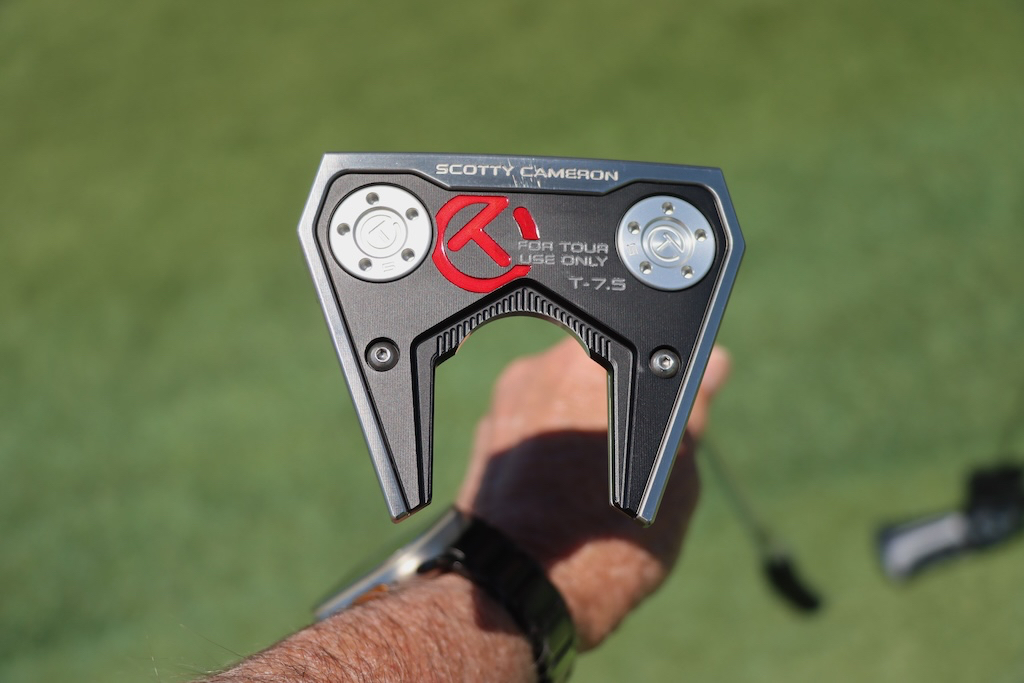
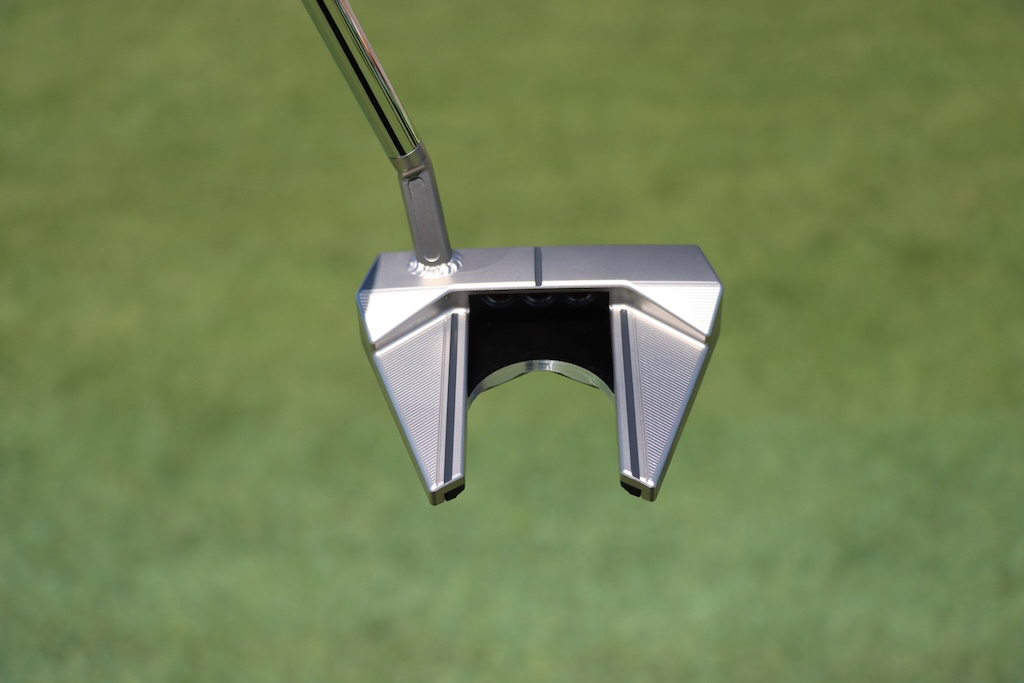
Alex Fitzpatrick’s Bettinardi SS16 DASS
Alex’s SS16 is made from Bettinardi’s famous D.A.S.S., or double-aged stainless steel, for a softer and more responsive feel. The face has a unique diamond pattern milling and features a logo that I feel like I have seen before, but can’t put a name to. The putter is a classic mid-mallet style with a simple, single white siteline on the top. The sole is clean with just the SS16, DASS, and a green triangle logo on it.
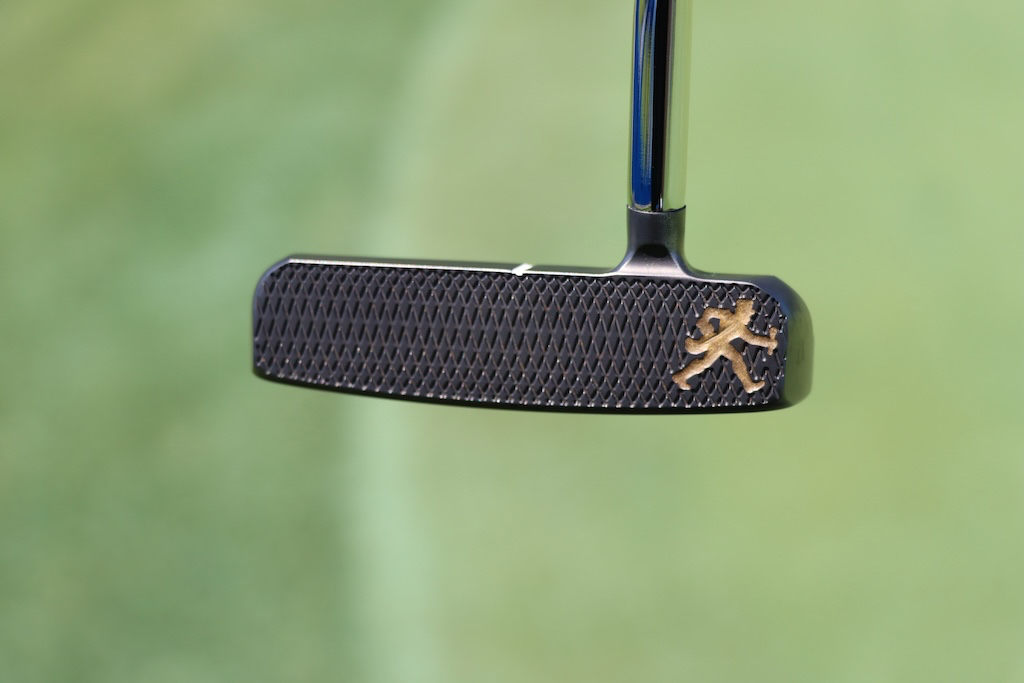
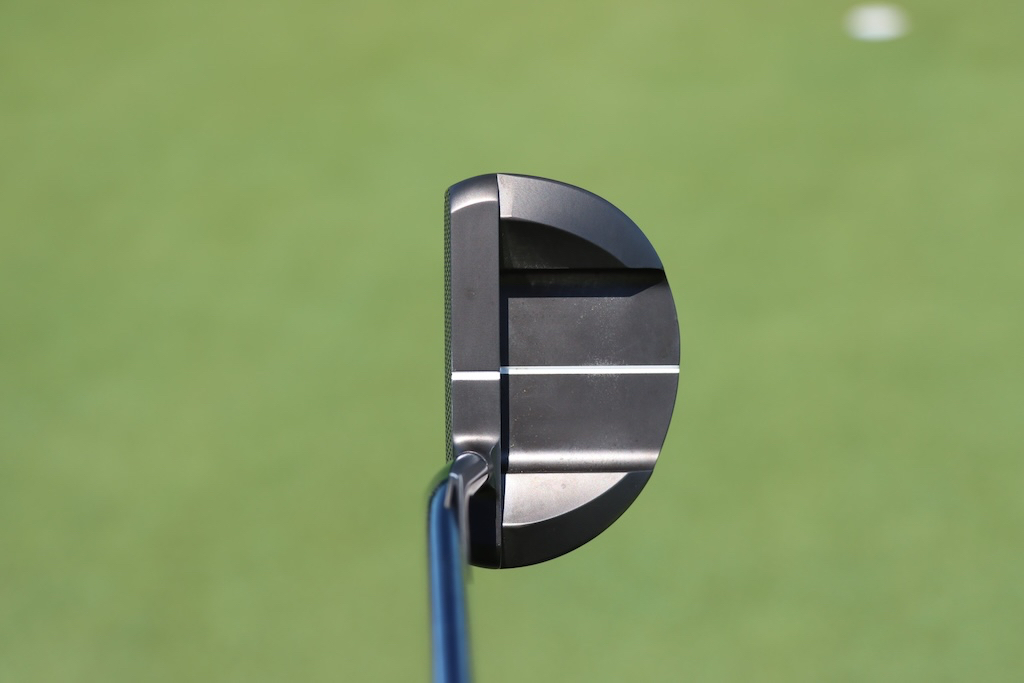

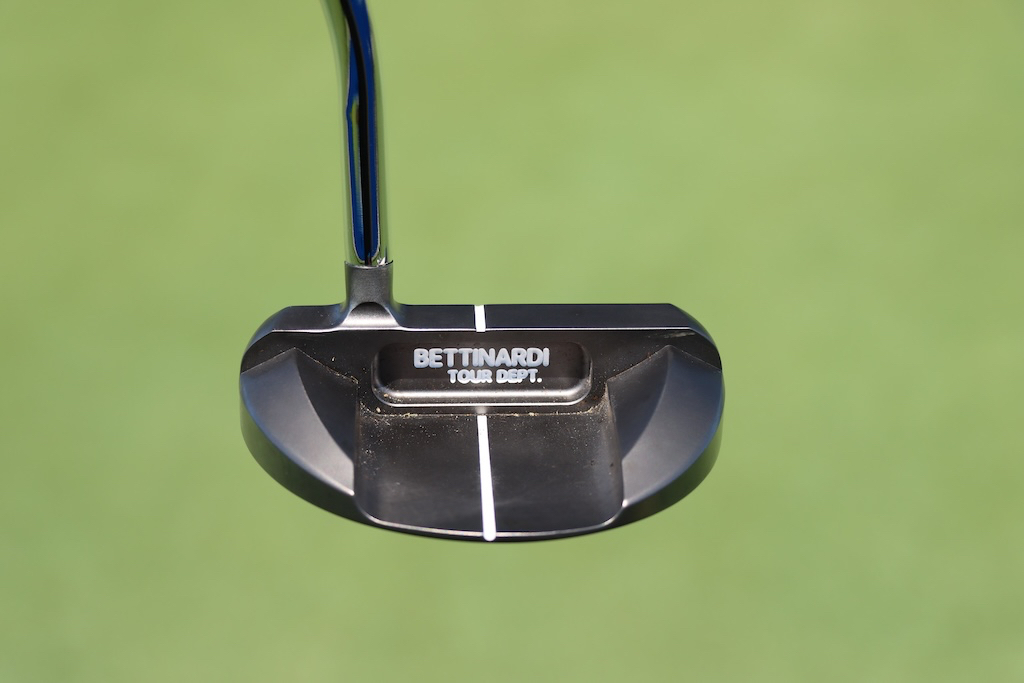
Steve Stricker’s Odyssey White Hot No. 2
This putter has made some amazing putts in its long career! Stricker’s White Hot No. 2 might be in the top 10 of most famous putters in golf. When you see all the dents and lead tape, you know the heel will be up and it will be sinking putts! The soft White Hot insert looks to be in good shape and has less wear on it than the rest of the putter. We don’t know how much lead tape is on the sole, but it has to be multiple layers compacted down over the years.
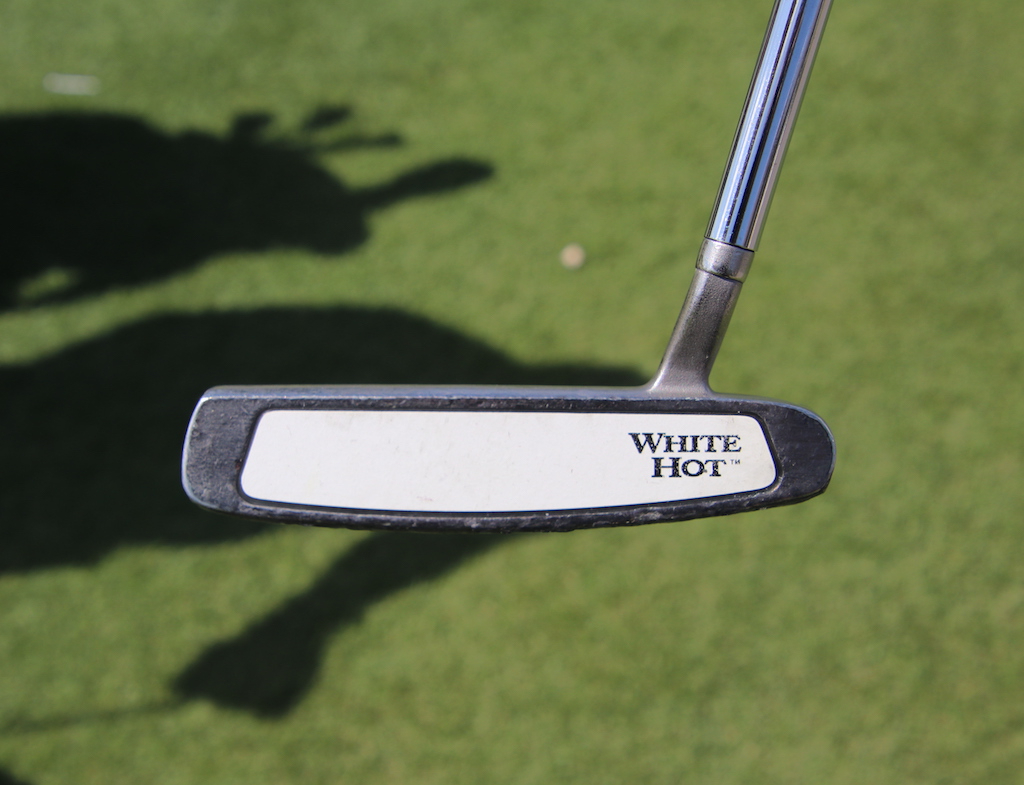


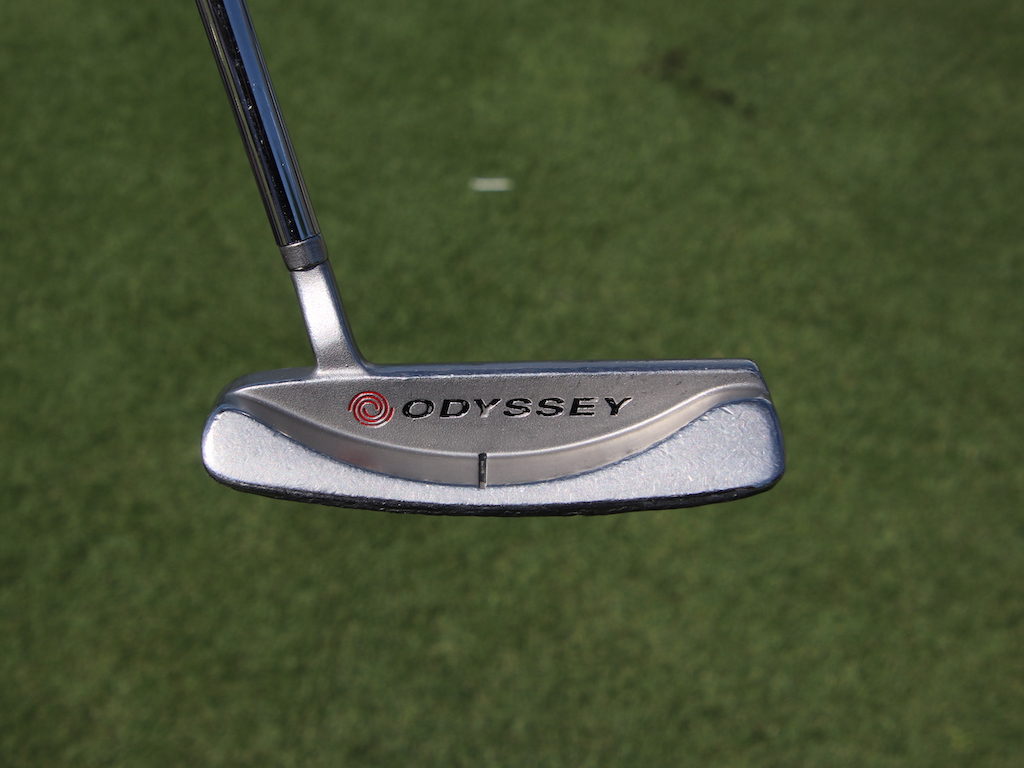
Doug Ghim’s Scotty Cameron T-7 Prototype
This T-7 should win the award for “best color finish” in this list with its deep chromatic bronze. It looks like Scotty added a cherry bomb dot to the heel of the deep-milled face and filled it with a very dark blue paint. The rest of the putter looks pretty stock with its single site line on the topline and twin site lines down the “fangs” of the putter. Twin 5-gram weights are installed in the sole and the putter is finished off with a gloss black double bend shaft with a fill shaft offset.
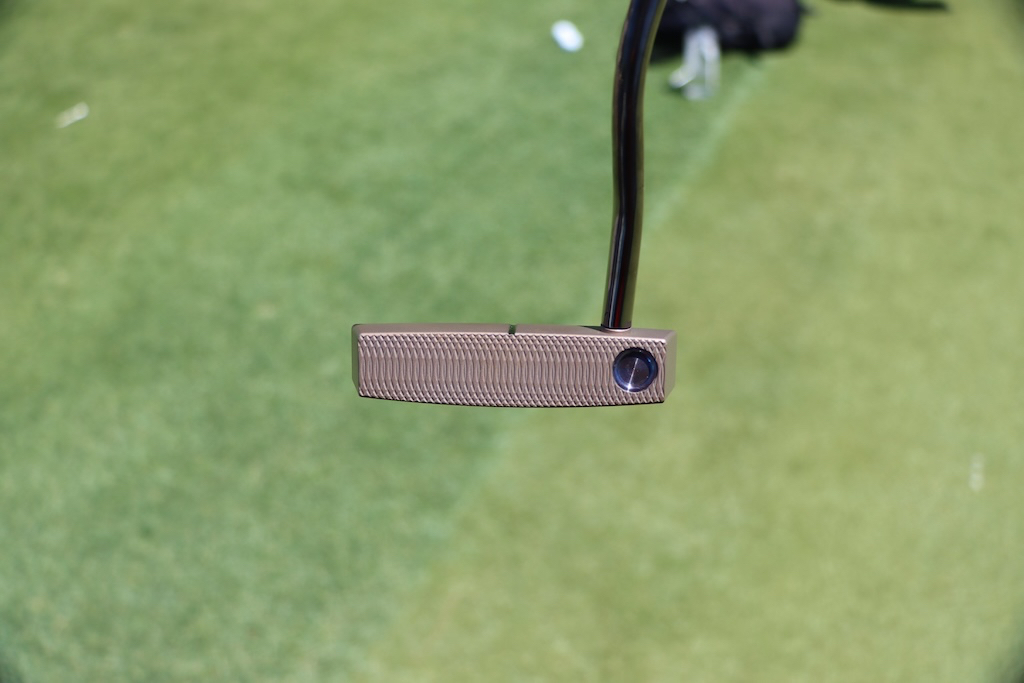
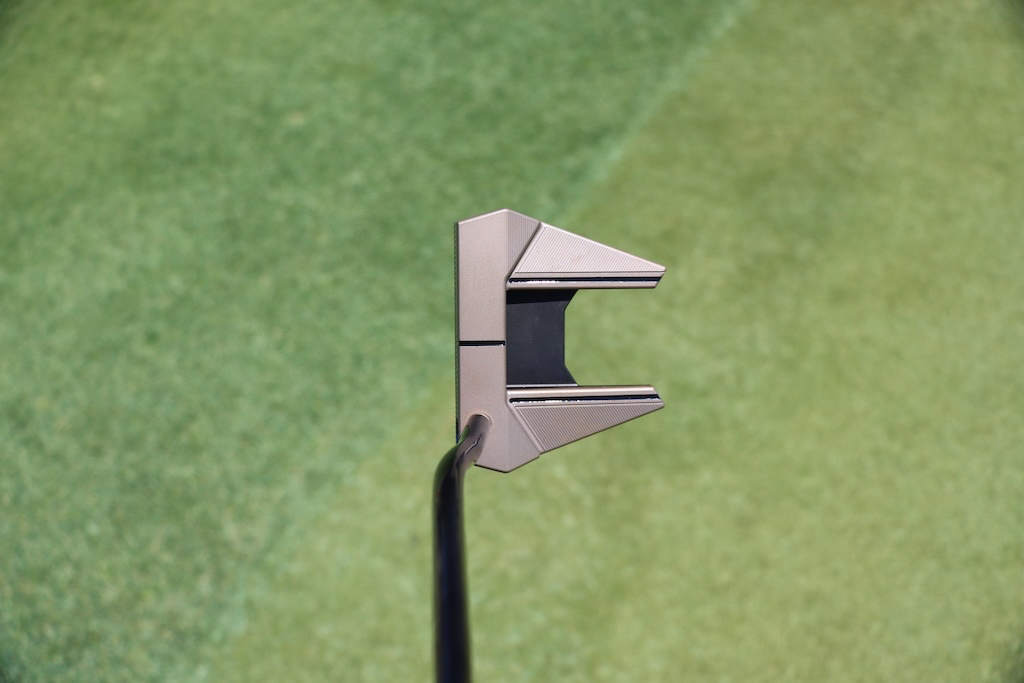
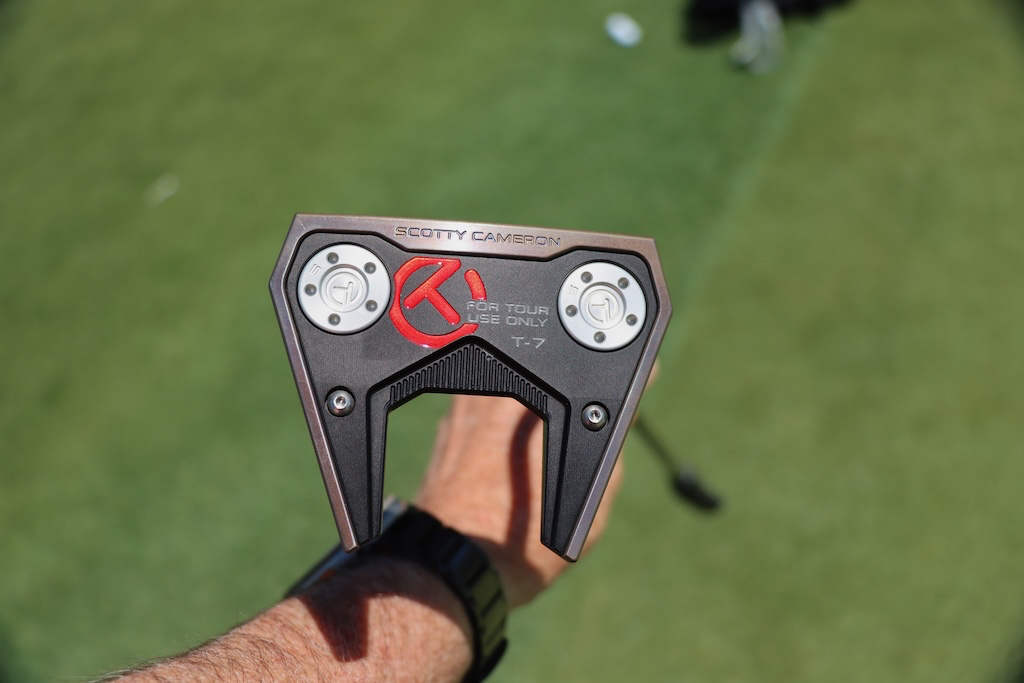
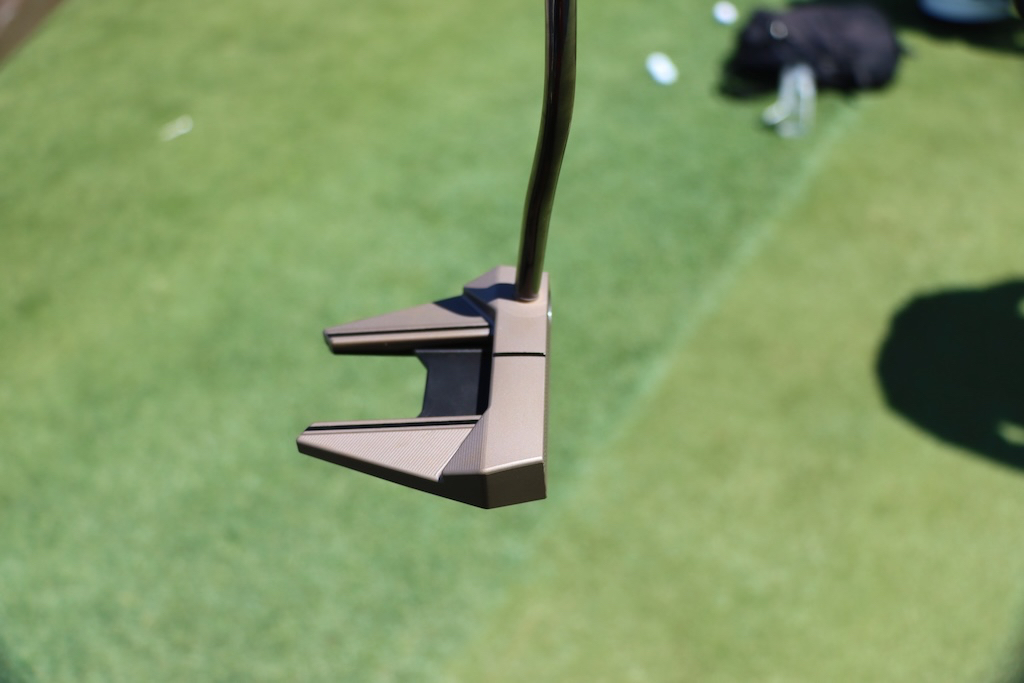
- Check out the rest of our photos from the 2024 Zurich Classic
- LIKE0
- LEGIT0
- WOW0
- LOL0
- IDHT0
- FLOP0
- OB0
- SHANK0
Equipment
Spotted: Project X Denali hybrid shaft
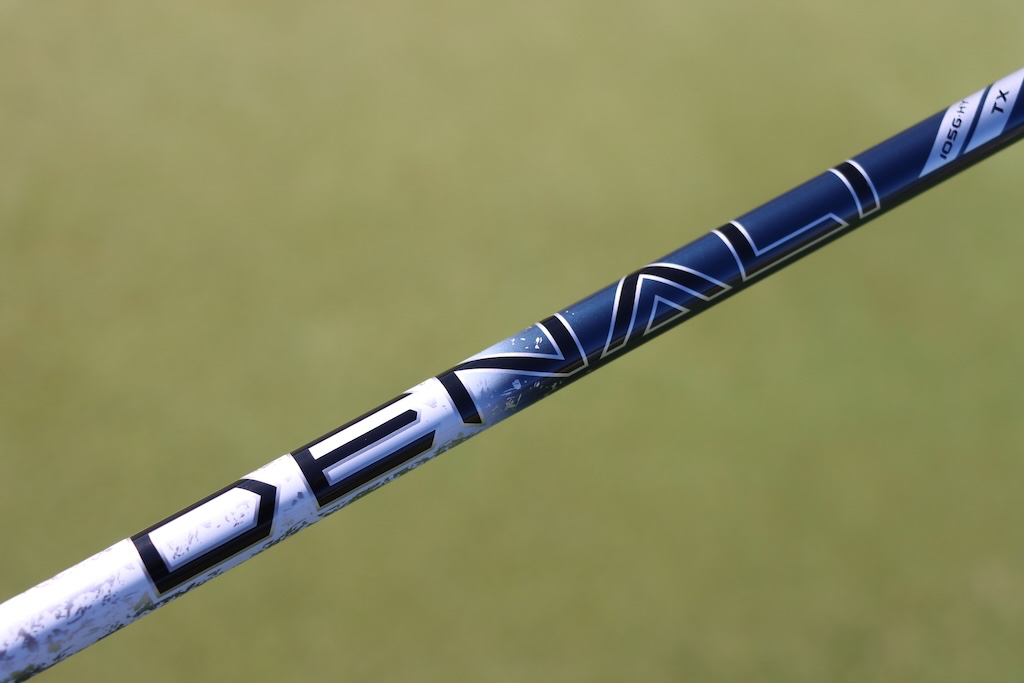
Project X’s Denali wood shafts have been seen in more and more golf bags this year as we start off the season. As a refresher, Denali Blue is the mid-launch and mid-spin model while Denali Black is for players seeking lower launch and spin.
Denali combines great feel with stability and increased ball speed. Currently, Project X only offers Denali Blue and Black in wood shafts, but we spotted a hybrid shaft in Daniel Berger’s bag at the 2024 Zurich Classic.
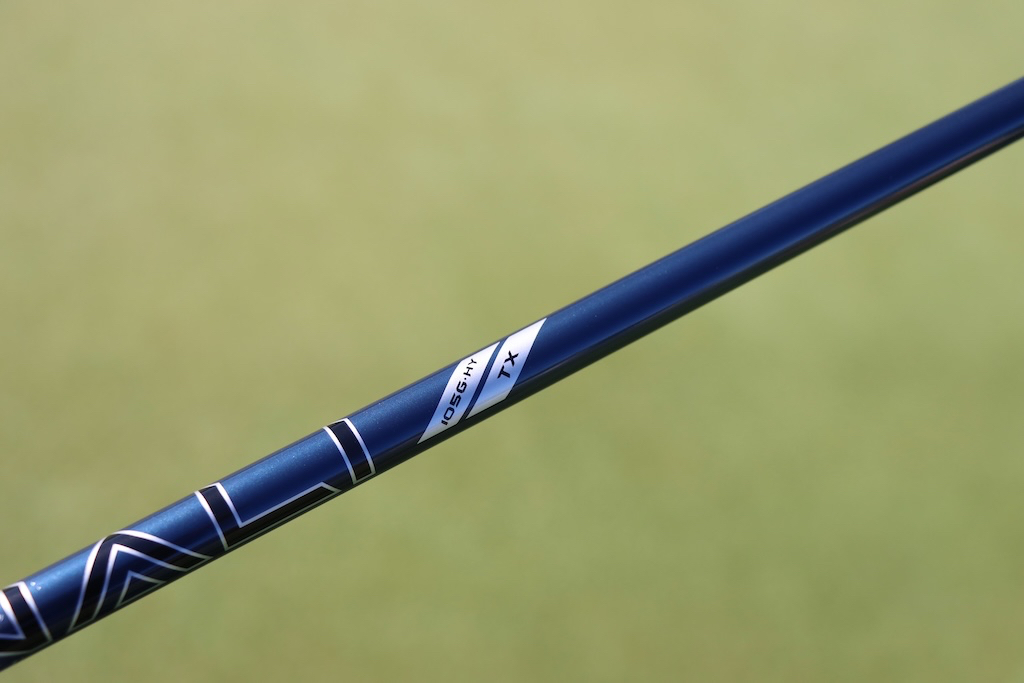
The shaft looks to be a Denali Blue 105G – HY in TX flex. No word on details from Project X yet but we can assume that this is a mid-launching shaft that weighs around 105 grams in Tour X-Stiff flex.
Berger has this shaft in his TaylorMade P770 3-iron, likely for some added launch and spin to hold the green from longer distances.
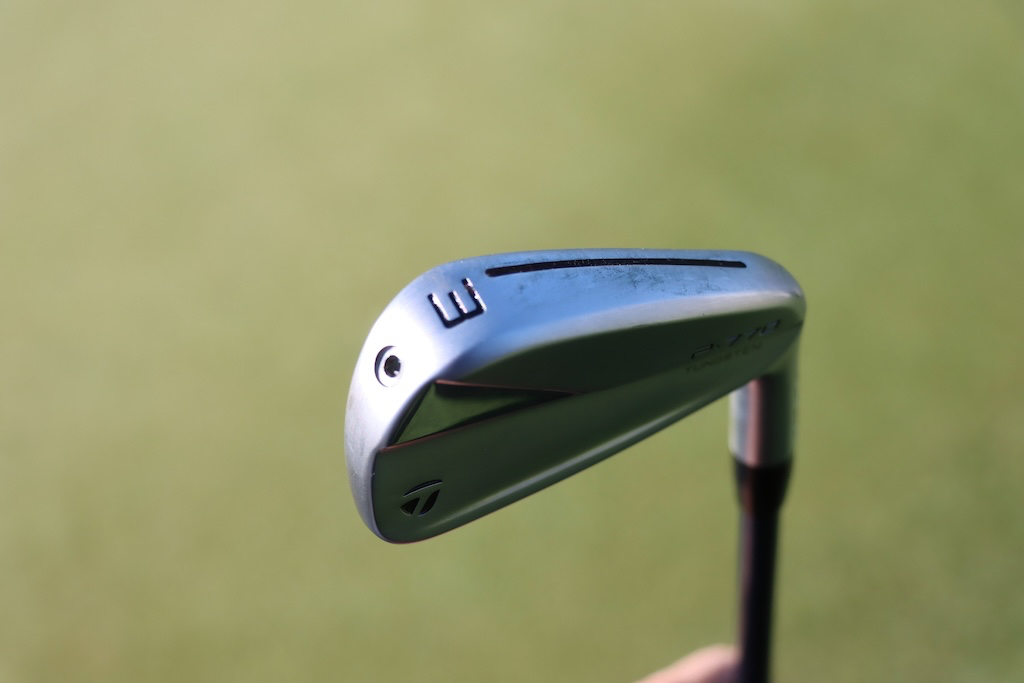
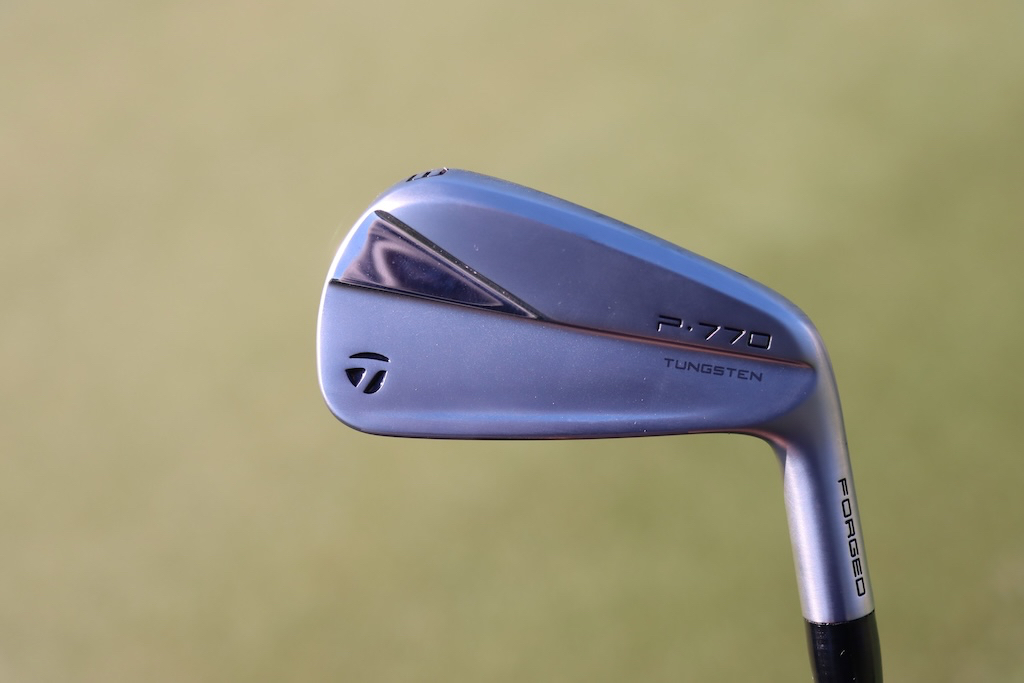
Hopefully, this means we will see some more shafts coming under the Denali name in the future, as I think many of us would like to try one in a hybrid or utility iron!
- Check out the rest of our photos from the 2024 Zurich Classic
- Check out in-hand photos of Daniel Berger’s full WITB here.
- LIKE0
- LEGIT0
- WOW0
- LOL0
- IDHT0
- FLOP0
- OB0
- SHANK0
Whats in the Bag
Daniel Berger WITB 2024 (April)
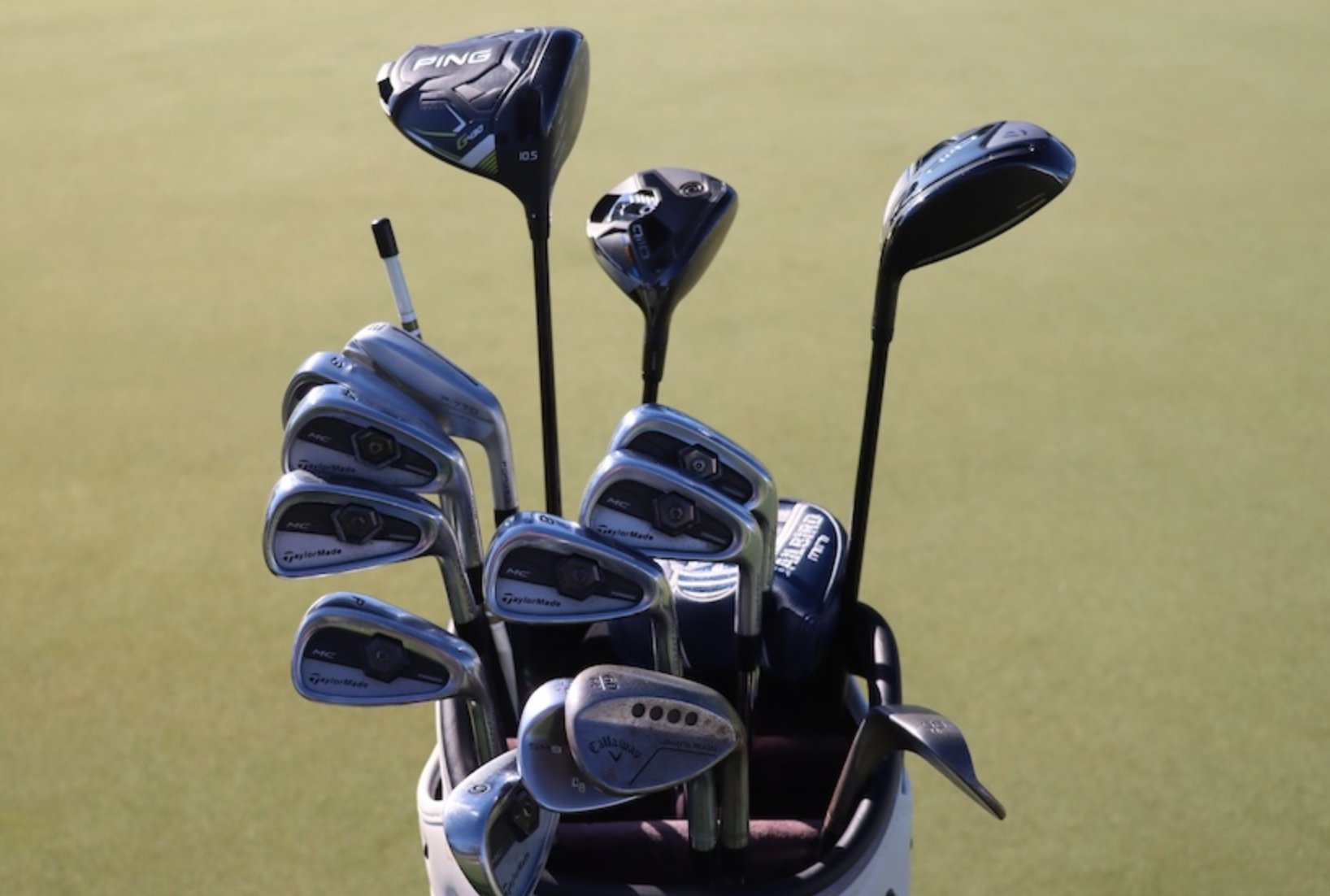
- Daniel Berger what’s in the bag accurate as of the Farmers Insurance Open. More photos from the event here.
Driver: Ping G430 LST (10.5 degrees)
Shaft: Fujikura Ventus Black 6 X
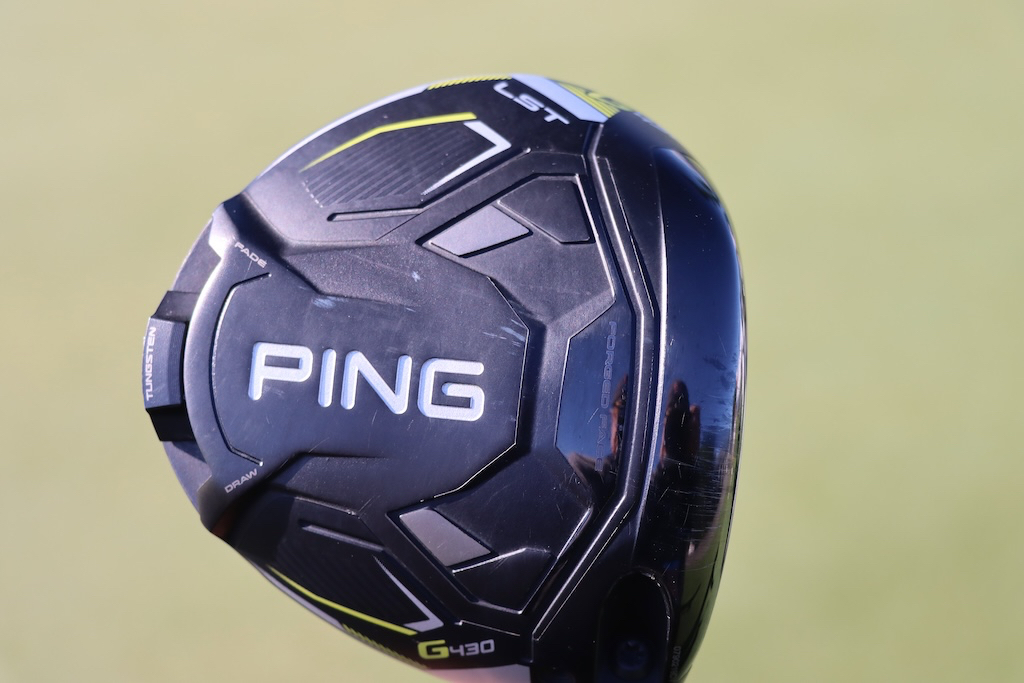
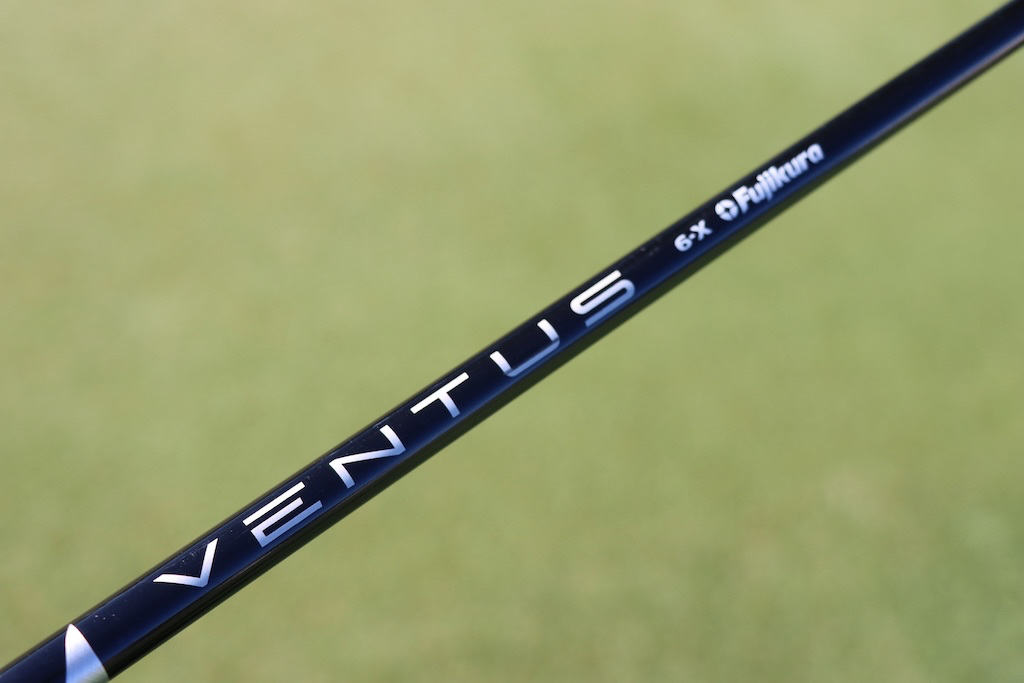
3-wood: TaylorMade Qi10 (15 degrees)
Shaft: Fujikura Ventus Black 7 X
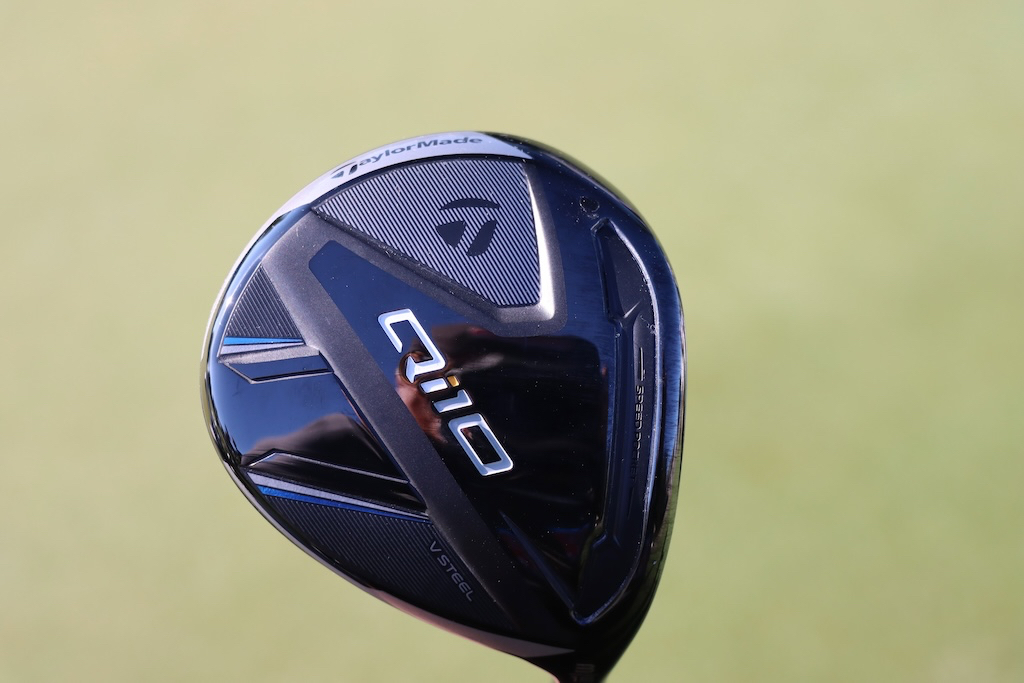
6-wood: TaylorMade Qi10 Tour (21 degrees)
Shaft: Fujikura Ventus Black 8 X
Irons: TaylorMade P770 (3), TaylorMade Tour Preferred MC 2011 (4-PW)
Shafts: Project X Denali Blue 105 TX (3), Project X 6.5 (4-PW)
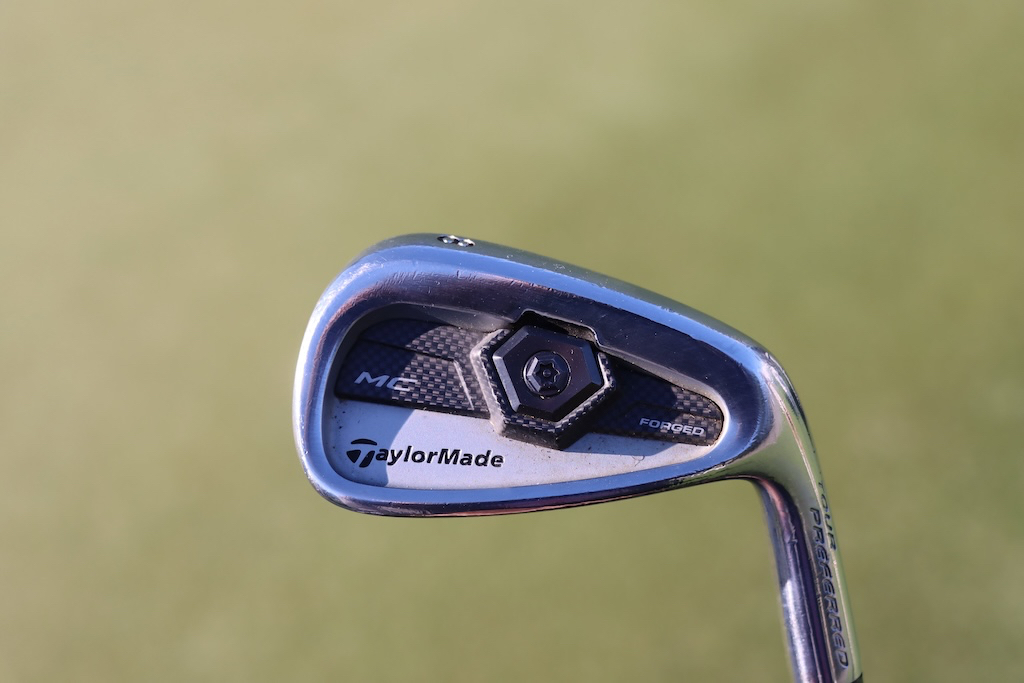

Wedges: Titleist Vokey Design SM9 (50-12F), Titleist Vokey Design SM10 (56-14F), Callaway Jaws Raw (60-08C)
Shafts: Project X 6.5 (50), True Temper Dynamic Gold Tour Issue S400 (56, 60)
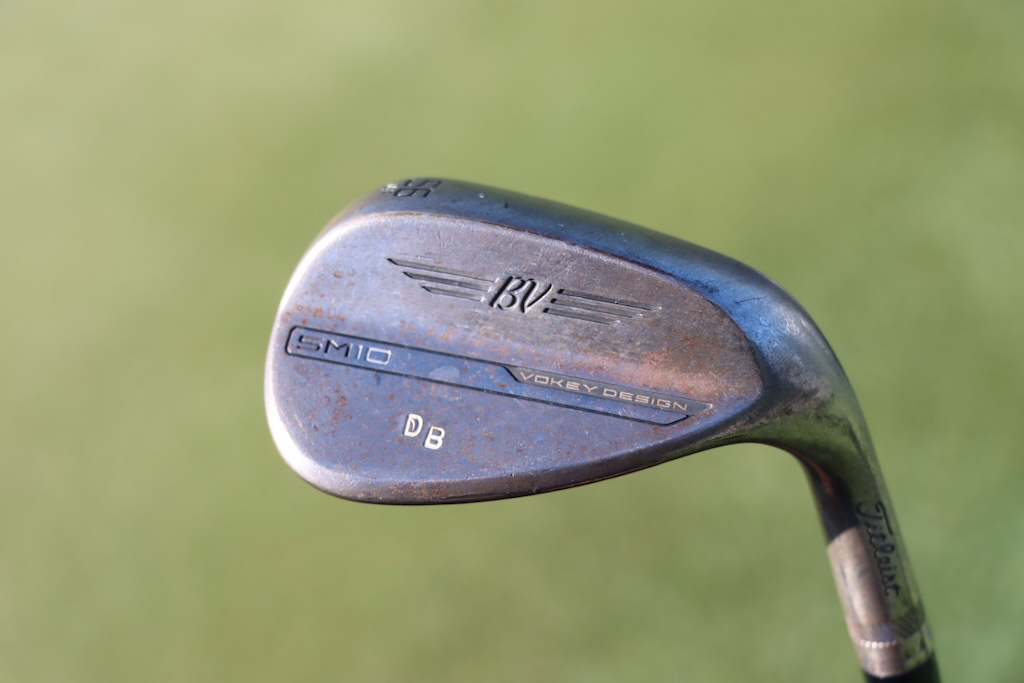
Putter: Odyssey Ai-One Jailbird Mini DB
Grip: SuperStroke Zenergy PistolLock 1.0
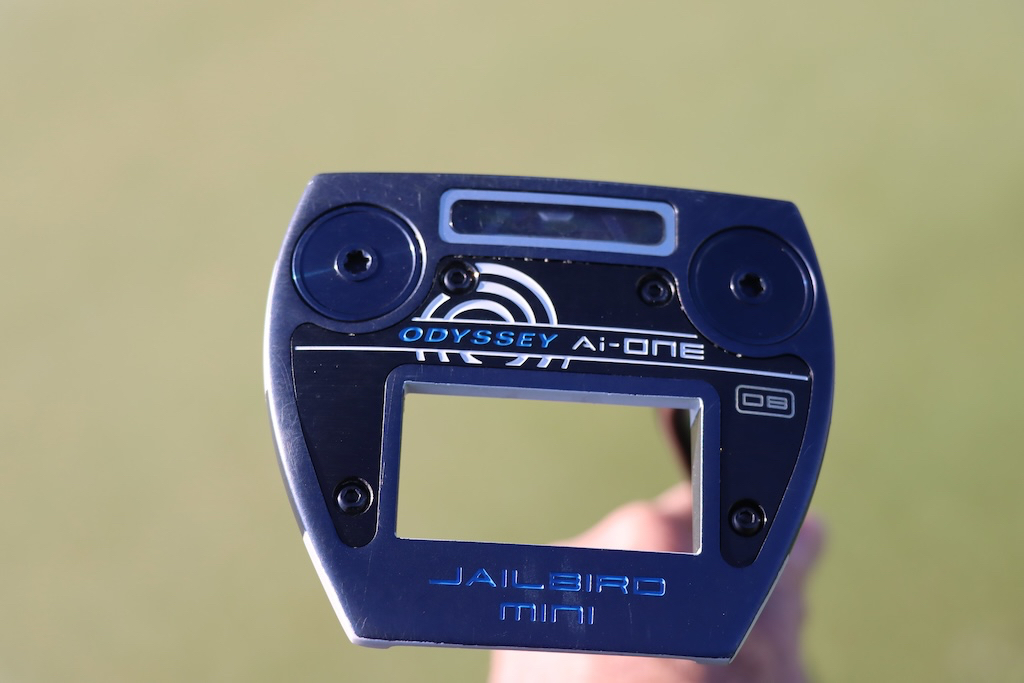

Grips: Golf Pride Tour Wrap
Ball: Titleist Pro V1
Check out more in-hand photos of Daniel Berger’s clubs in the forums.
- LIKE4
- LEGIT0
- WOW1
- LOL1
- IDHT0
- FLOP0
- OB1
- SHANK0
-

 19th Hole2 weeks ago
19th Hole2 weeks agoDave Portnoy places monstrous outright bet for the 2024 Masters
-

 19th Hole3 days ago
19th Hole3 days agoJustin Thomas on the equipment choice of Scottie Scheffler that he thinks is ‘weird’
-

 19th Hole2 weeks ago
19th Hole2 weeks agoTiger Woods arrives at 2024 Masters equipped with a putter that may surprise you
-

 19th Hole3 days ago
19th Hole3 days ago‘Absolutely crazy’ – Major champ lays into Patrick Cantlay over his decision on final hole of RBC Heritage
-

 19th Hole2 weeks ago
19th Hole2 weeks agoTwo star names reportedly blanked Jon Rahm all week at the Masters
-

 19th Hole1 week ago
19th Hole1 week agoReport: LIV Golf identifies latest star name they hope to sign to breakaway tour
-

 19th Hole1 week ago
19th Hole1 week agoNeal Shipley presser ends in awkward fashion after reporter claims Tiger handed him note on 8th fairway
-

 19th Hole1 week ago
19th Hole1 week agoBrandel Chamblee has ‘no doubt’ who started the McIlroy/LIV rumor and why

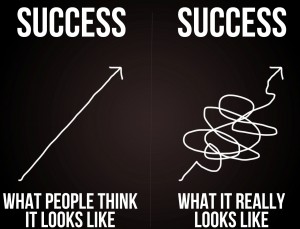
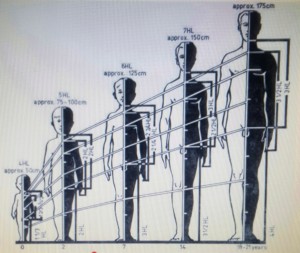

















James G
Nov 14, 2016 at 10:46 am
Kids will improve at their own pace and interest level. Main thing is to make sure it is fun for them even if they are playing horribly. The little league overbearing parents we’ve all seen exist in golf too and it actually hurts a kid’s development. Finally, no matter how badly a parent may want their child to be good in a sport some kids just have little or no athletic ability and that’s ok. Some kids are musically talented and others aren’t as another example. Be encouraging, get good instruction and let them have fun. Make games out of it. Maybe bet the kid pizza against chores.
Harry White
Nov 12, 2016 at 1:57 am
Juniors or adults of any age can improve steadily with a totally different way of teaching. So called modern teaching methods guarantee an average score of just under 100 as evidenced over the past 100 years. Learning is an art and should be offered that way. Count Yogi Golf does just that.
Bob Jones
Nov 11, 2016 at 10:35 am
Maybe your child is just not into golf.
Grizz01
Nov 11, 2016 at 9:41 am
That is insulting to Offensive lineman. They are not just couch potatoes. If you want to play in a high level College. You need to bench 225 lbs. x20 and have incredible 10 yard burst and run a 40 in about 5.0-5.4. A height of no less than 6’3″ weighing in over 270lbs.
KoreanSlumLord
Nov 10, 2016 at 5:15 pm
Fact…you were born with golf talent. No one reading this website was born with the golf gene. You either are or are not a player.
Grizz01
Nov 11, 2016 at 9:37 am
I was thinking in the same lines. All the info shared is good, but it may just come down to being athletic enough to pull it off. Another item is desire, there are people out there (which the PGA and USGA doesn’t seem to understand) who just don’t care and will never care about the game.
golfbum
Nov 10, 2016 at 1:41 pm
Why? Well look at all the answers so far; they are all spot on. When I was a kid, at 6:00am is was “by mom, I am going to the golf course!…will be home for dinner!” Today, parents would never allow this to happen. They hover over the kids. Kids need to play golf with other kids, and develop their skills together.
You know, when things like this come up my first reaction is to blame the GOLF CHANNEL….you see all these shows that highlight junior golf at the highest levels..thus parents make the false assumptions that their child should be this or that good by 11 years old. It just doesnt work that way, mommy! Far too many kids I see being coached by their 12 handicap fathers, spend far too much time at the range instead of just playing and again, playing with their peers. The game is supposed to be fun, but forcing a child to practice or managing their process should not be part of the equation. Standing over them while they do so, is not going work out well for you, Dad! Because daddy may be a CEO of some 100 million dollar company, but you have no clue how to play golf! You may be able to manage subordinates, but you have no clue how to play golf!
Kids should play golf with kids! Play in tournaments and make friends. Lifelong friends!
Rors
Nov 10, 2016 at 12:00 am
Wow, isn’t that a fact… XBOX generation…
Pingback: Why isn’t my child getting any better at golf? – Swing Update
Eric
Nov 9, 2016 at 4:15 pm
Probably because you’re not yelling at the loud enough
Looper
Nov 10, 2016 at 12:01 am
Huh, I can’t hear you… Funny
Looper
Nov 9, 2016 at 2:56 pm
Some kids are just not going to make in some sports. Try’m all and see what sticks…
Butter
Nov 9, 2016 at 11:41 am
The Parents need to take a look at themselves and ask how they were at all kinds of hand-eye ball sports when they were growing up themselves.
And now kids have so many other things that they do, other sports and, video games etc. Are the kids willing to drop some of those other things to focus more on golf.